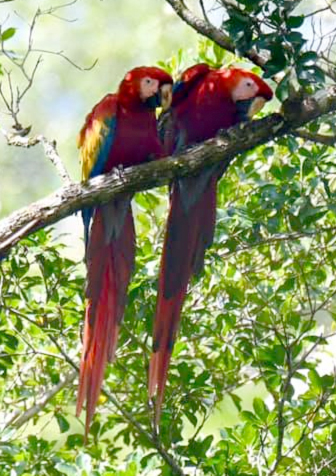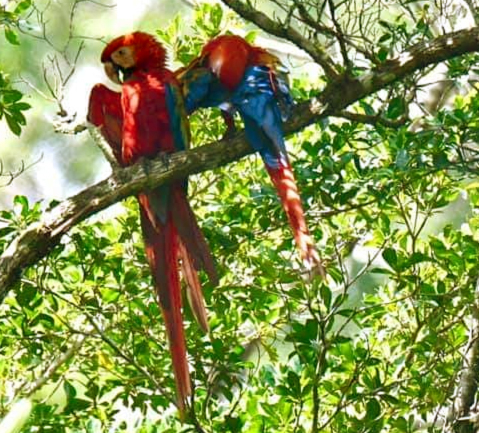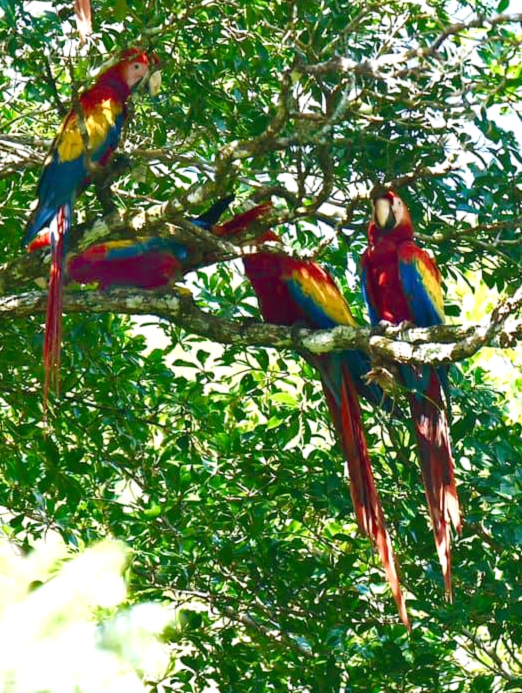
Scarlet Macaws appeared in great numbers at BIB in early 2021. A flock of 21 was spotted in the lower milpa, and smaller numbers were seen at various other locations in BIB. Here are some photos by one of our resident photographers, Dave Love, who encountered this flock feasting on wild fruits in the big trees at the lower milpa on BIB’s River View Drive.
Many years ago scarlet macaws were relatively common here and in the surrounding jungle, but people robbing nests for eggs and chicks to sell to the pet trade, plus forest fragmentation due to farming and fires have reduced their numbers to such an extent that they are now listed as endangered. To see even a single bird in recent years has been a cause for awe and celebration.

But why have they suddenly appeared in such large numbers at BIB? Much of the credit that they have not disappeared completely must be given to the Belize Bird Conservancy (formerly known as Scarlet Biomonitoring), which monitored nests between 2019 and 2021 to discourage the pet trade. This is the main scientifically-backed reason for increased numbers and a decrease in poaching.

However, extensive wildfires in 2020 destroyed much of the macaw’s previously undisturbed and remote forest habitat, so this could also have contributed to our sudden influx of birds here, since BIB still has old forest trees producing an abundance of fruits. Some believe that it’s also the lack of tourists due to Covid-19 which has allowed their numbers to increase. Whatever the reason or reasons, it is especially important to make them welcome here to ensure that their numbers, estimated at only about 250 in recent years, don’t drop further. As well, in order to retain BIB’s function as a viable habitat for wildlife, we should carefully monitor any removal of trees that native animals use.
Keep an eye out for these big, flashy, red/blue/yellow parrots as they work their way through the fruiting forest trees at BIB, and reflect on how important it is to preserve as much of the wild nature of our eco-community as possible.
Thanks to Dave Love and Carissa Kent for the photos and research from Belize Bird Conservancy.